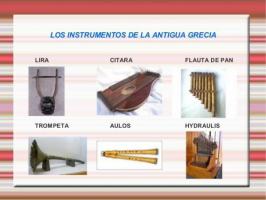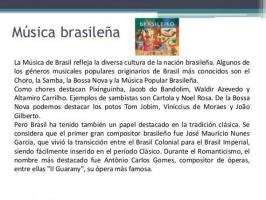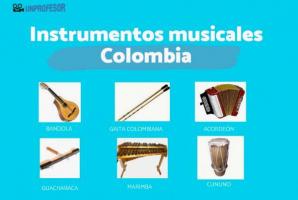Complete list with AFRICAN musical INSTRUMENTS
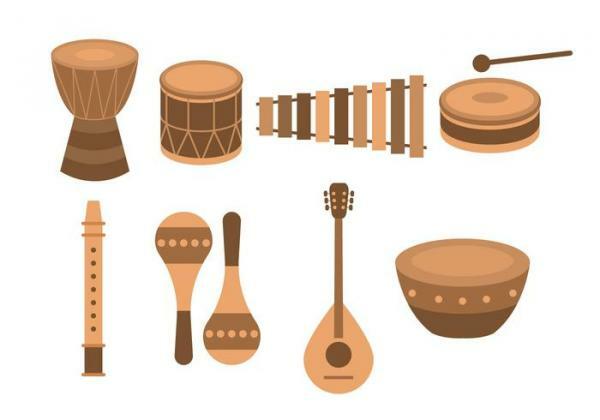
Image: Veectezy
In music, as in many other disciplines related to creation, diversity is an element not only enriching, but also crucial for the evolution of art. Creativity is a skill that we possess when we take resources that we know and combine them to come up with something new and innovative. In such a way, and thanks to the different origins of the people who dedicate themselves to this quality, we have obtained a large amount of musical instruments with unique characteristics that expand our options for exploring with sounds. In this article by a TEACHER we will refer to a different part of the world of music, we will explore a list with African musical instruments.
It is very important to mention that Africa is a large continent, with cultural diversity that is also reflected in music. Africa is divided into 5 geographical regions but if this is the case, we can roughly mention that it is highlights the division of Arab countries (near the desert) and "sub-Saharan" countries (south of the desert Sahara).
Although today music in all its forms has expanded globally, we know that Africa has left a powerful legacy to music: rhythmic richness. Being rhythm one of the characteristic African factors, it is natural that many of their instruments are oriented to this part of music.
Music has always been a fundamental element in the social activities of African communities, accompanied by dance and song as moments of joy and energy in groups of people, where everyone participates in the activity and there is clearly no line that divides the interpreters from the audience. This has also given rise to another important element: improvisation.
As a result of events in history such as slavery and the export of slaves, very interesting cultural fusions were created. Many musical genres such as jazz (base of ternary figures) and Afro-Cuban (salsa and rumba rhythms) They owe their musical richness to the fusion of Western elements with these African legacies.
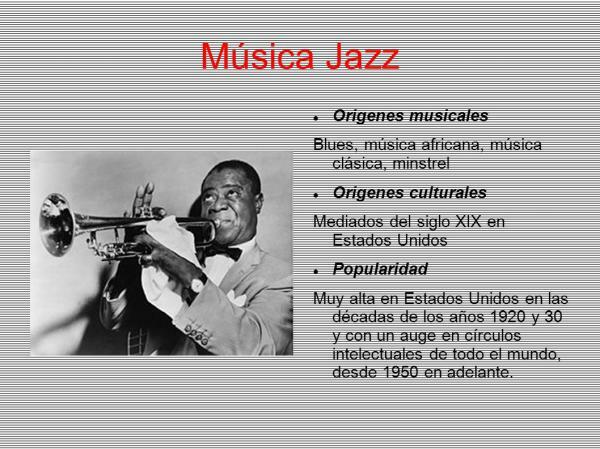
Image: Slideplayer
Among African musical instruments we find string instruments and a few wind instruments, but percussion instruments stand out, since they have a wide variety. Here is a list of instruments and description, organized by category.
Drums (percussion with body and membranes)
- Atabaque, Ashiko, Djembé: They are drums of different sizes and shapes generally made of wood that are played mostly with the hands. They have a single patch usually made from ox or goat skin. This head is stretched to the body of the instrument by a system of strings or ropes tied together in the form of a net.
- Batá, Dundun, Kebero, Tama (Talking Drum): They are also drums but these have patches of skin on both ends. Depending on the size and shape of the drum, the sound changes in pitch. Sometimes the sides are the same diameter and without curves in the body, as in the case of the dundun, and other times not, as in the case of the batá that is shaped like an hourglass and ends of different diameter.
- The tama is another instrument with the shape of an hourglass and is very curious, since it is designed to imitate the human voice, which gives it the name of “talking drum”. The tama is played from the shoulder and struck with a curved stick. The heads are tensioned with ropes that can be pressed to increase or release the tension and thus change the pitch of the sound produced when the heads are struck.
- Bless: It is a drum from North Africa. Unlike other drums, the bandir is more like a tambourine, with a short body length but with a large diameter membrane that can be 40cm or more.
- Darbouka (Darbuka, Derbake), Naqareh: They are smaller drums, of Arab origin. Previously they were made with wood but later they began to be made with clay and metals. In the case of the Naqareh, they are played in pairs.
Percussion without membranes
- Axaste and Shekeré: They are instruments similar to each other, of small or medium size, made with the rind of dried fruits such as pumpkin. Their bodies are covered in a net with beads that strike the body to produce sounds when shaken.
- Agogó: One or two connected metal bells that are struck with a stick or stick.
- Calabash: It is made from a large, dry pumpkin cut in half. It is played with the hands and fingers while resting on the floor.
- Cas-Cas: It is also known as Thelevi, Kashaka, Keseng-Keseng or Asalato. They are two dried fruit shells filled with seeds to be used as rattles or maracas. Both are connected by a cord that allows them to remain connected in such a way that when one is thrown, it hits the other. Apart from a musical instrument, the cas-cas is also used as a toy.
- Slope, Ekwe: Made of bamboo or wood, they have rectangular grooves and are played with drumsticks that sometimes have leather tips.
- Udu: It is a small vessel-shaped instrument made of clay and stone. The Udu is partially filled with water and has two holes, one in the body and one in the upper part, which is where it is struck. The word Udu means "peace" or "vessel" and comes from Nigeria. It was used mostly by women for ceremonial purposes.
Defined sound percussion
- Balafon: It is a relative of the marimba or xylophone. It is made of wooden bars arranged by tuning to be struck, the sound is amplified by resonators made of pumpkin skin.
- Mbira (Kalimba or Ilimba): It is a small instrument made of wood that has thin metal sheets of different sizes that are pressed with the fingers. The sound is amplified by a hole in the body of the instrument.
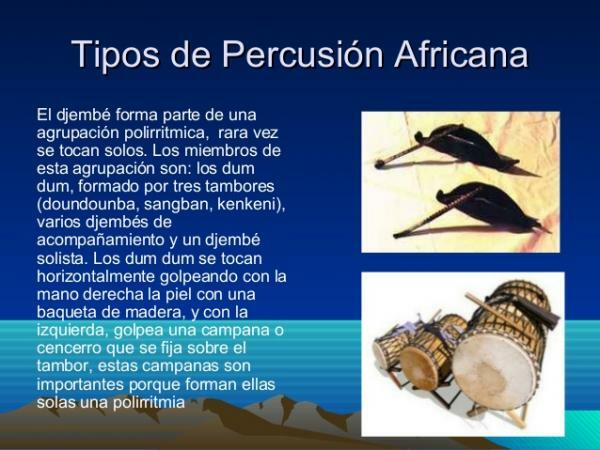
Image: Slideshare
Besides percussion, African music also abounds with other musical instruments that are very important. Here we discover the two most outstanding groups: the string instruments and the wind instruments.
African stringed instruments
Ardín, Begena (Beganna), Birimbao, Dungu, Locombe, Gumbri (Guembri or Sintir), Inanga, Krar (Kissar), Kora, Mbela, Ngombi, Xalad (Tidinit): These are instruments that use the principle of the lyre or guitar with 1 or more strings (depending on the instrument) that are taut at the ends and that can vary in length to change their tuning. Some are touched with the fingers and others are struck with a stick.
African wind instruments
- Kakaki (Malkat or Waza): It is a kind of long metal trumpet that can grow to 3 meters or more. Traditionally used for ceremonies.
- Mizwad: It is of Arab origin and has a bag made of goatskin that stores the wind to be released under pressure. It works similar to a bagpipe.
- Arghul, Ghaita, Ney, Washint: They are instruments similar to the flute, made of wood or reed and that have holes to change the notes. Varies by version and origin. Some have reed (a piece attached to the body where it is blown) as is the case with the Ghaita.
Let us remember that although we have named several relevant instruments, there are many others that may be versions of them, with different materials or perhaps different places of origin. As in all cultural and art aspects, musical instruments are a vast area rewarded for invention.
If you liked reading this article by a PROFESSOR and you were interested in this list with instruments African musicals, we invite you to leave a comment and continue exploring the rest of articles.
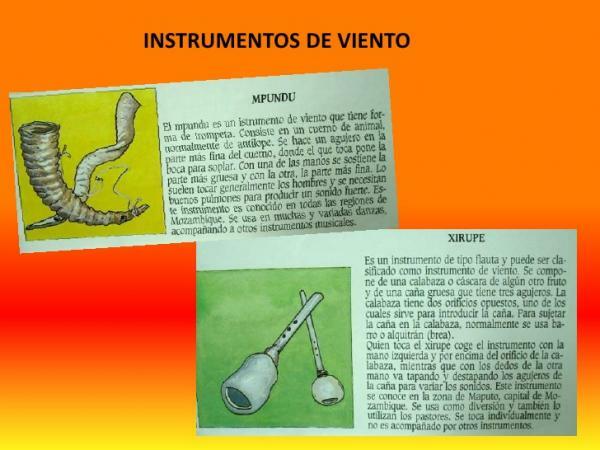
Image: Slideshare

